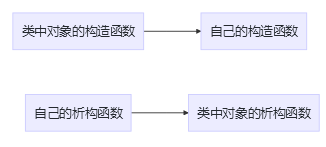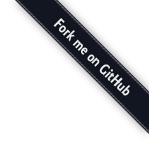析构函数
什么是析构函数
创建对对象时,系统会自动调用构造函数为我们进行初始化,同样,在销毁对象时也会自动调用一个函数为我们收尾,如释放内存等,这个函数是析构函数。
析构函数也是一种特殊的成员函数。
特点
- 析构函数的名称和类的名称相同,在前面加
~ - 析构函数没有返回值,无参数
- 析构函数只能在类中使用,且只有一个参数
- 不能继承和重载析构函数
- 析构函数不能显性调用
什么时候调用析构函数
- 对象生命周期结束被销毁时
#include <bits/stdc++.h>
using namespace std;
class A {
public :
A(){ printf("A()\n"); }
~A() { printf("~A()\n"); }
};
int main() {
A a;
printf("do sth\n");
return 0;
}
输出
A()
do sth
~A()
- 主动delete指向对象的指针时
我们用new创建了一个指向对象的指针,如果不主动delete,像这样
#include <bits/stdc++.h>
using namespace std;
class A {
public :
A(){ printf("A()\n"); }
~A() { printf("~A()\n"); }
};
int main() {
A *p = new A;
printf("do sth\n");
return 0;
}
会输出
A()
do sth
调用delete释放空间时会调用析构函数
#include <bits/stdc++.h>
using namespace std;
class A {
public :
A(){ printf("A()\n"); }
~A() { printf("~A()\n"); }
};
int main() {
A *p = new A;
printf("do sth\n");
delete p;
return 0;
}
输出
A()
do sth
~A()
- 对象A是对象B的成员,B的析构函数被调用时,A的也会被调用
#include <bits/stdc++.h>
using namespace std;
class A {
public :
A(){ printf("A()\n"); }
~A() { printf("~A()\n"); }
};
class B {
A a;
public :
B(){ printf("B()\n"); }
~B() { printf("~B()\n"); }
};
class C {
B a;
public :
C(){ printf("C()\n"); }
~C() { printf("~C()\n"); }
};
int main() {
C c;
return 0;
}
输出
A()
B()
C()
~C()
~B()
~A()
构造函数是先调用类成员的,再调用自己的,析构函数是先调用自己的,再调用类成员的。

如果哪里有错误或不易理解,还请不吝赐教



